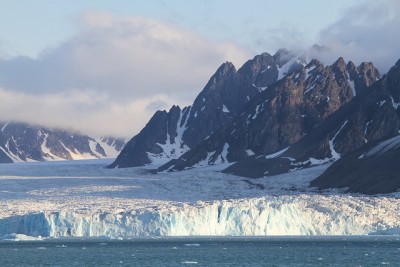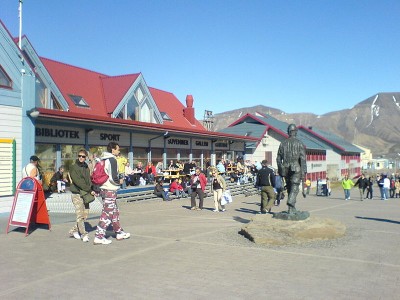Voters on Norway’s Arctic archipelago of Svalbard didn’t seem to have much gratitude for the local Labour Party’s efforts to keep its controversial coal mine open and operating. Record numbers turned out for Svalbard’s own local election Sunday and Monday, and voted mostly for the Conservatives and the Liberals, with the Greens party also scoring an important breakthrough.

Svalbard’s local elections are held every four years on the islands’ main settlement in Longyearbyen. As returns streamed in on Tuesday, the Conservatives’ top candidate Torgeir Prytz could tell Norwegian Broadcasting (NRK) that his party had “very good” results and was poised to form a new government coalition.
“We will invite the Liberals (a center-oriented party in Norway despite their leftist name) to negotiate (formation of a new right-center government),” Prytz told NRK. It looked likely that the Labour government that had been led by Christin Kristoffersen was set to be replaced.
There are less than 2,000 eligible voters on Svalbard but the islands’ small population plays an important role for Norway’s physical presence in the Arctic, where tensions with Russia (which maintains its own settlement at Barentsburg) have recently increased. Kristoffersen fought hard last winter to secure state government support to keep Svalbard’s Norwegian coal mining operations open because of the jobs they provide, and she succeeded. Winning another state bailout of the state-controlled Store Norske mining company, however, didn’t win her the election.

Instead, 61 percent of the eligible voters (who included residents over the age of 16 this time) elected five representatives from the Conservatives to Svalbard’s local government and three for the Liberals, giving them a new majority. In addition, the Greens Party, which did very well in local elections on the mainland last month, won two representatives.
“We are extremely pleased, and I’m touched,” Helge Bårdsdatter Kristiansen, the Greens’ top candidate, told NRK. “The election means that residents of Longyearbyen support a green shift.” She stressed that the Greens want to phase out Svalbard’s coal mining operations and promised to be “active” in opposition in the Longyearbyen’s local government. Labour, given its support for coal mining, seems more likely to vote against the Greens’ position, though, so the “opposition” may not be united.
Prytz of the Conservatives said he thinks voters on Svalbard, well aware of their strategic importance in the Arctic, wanted a change after several years of Labour rule, at a time of great change otherwise on Svalbard as well. He urged solidarity, though, and also has demanded that the Norwegian state government must continue to help maintain a Norwegian population presence as the mine cuts 150 jobs despite its renewed state subsidy. Efforts are underway to find new sources of jobs on Svalbard, but tourism and ongoing Arctic research projects currently can’t offset the mine’s job losses.
The Greens have earlier proposed adding to Svalbard’s population by settling some of the refugees pouring into Norway on the archipelago instead. Frode Forfang, head of Norway’s immigration agency UDI, has dismissed that suggestion, though, noting that Svalbard is a separate jurisdiction and “not part of our system at all.”
Labour lost two of its seven representatives in Svalbard’s local government, and its top candidate Arild Olsen said he couldn’t explain the loss. “We of course are disappointed today,” he told NRK.
newsinenglish.no/Nina Berglund

